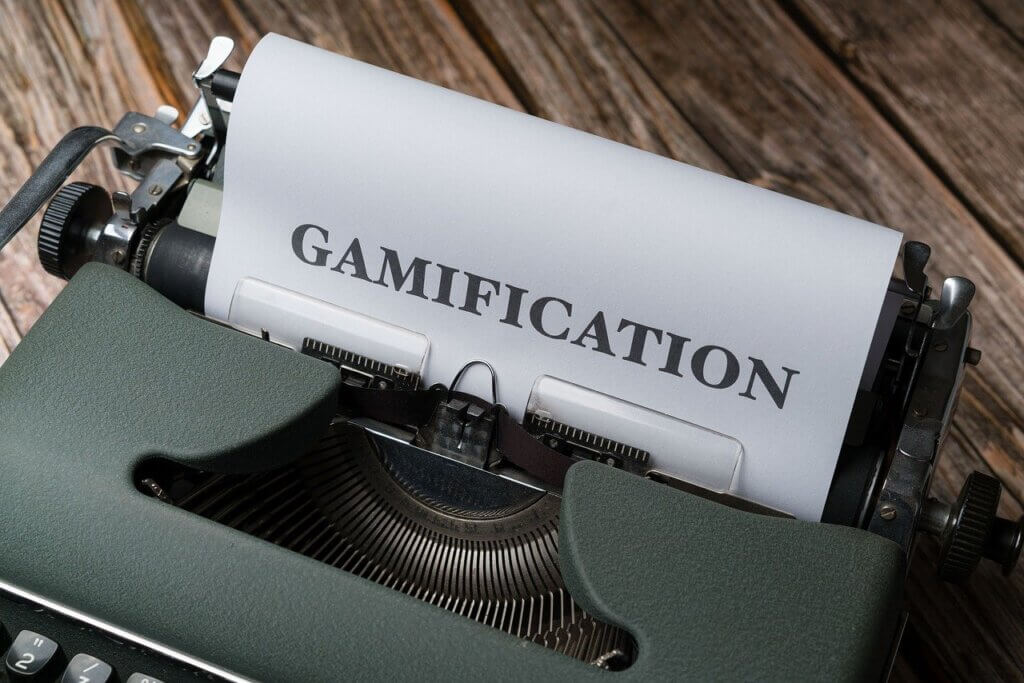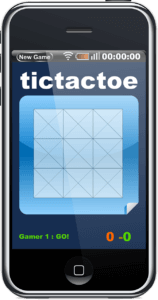
Mobile apps have become deeply ingrained in everyday life, with millions of apps available across app stores and billions of downloads each year. However, most apps struggle to retain users over an extended period of time. A report found that nearly 25% of app users abandon an app after just one use. Thus, increasing user engagement and retention has become critical for mobile app success.
Gamification offers a potential solution to this retention challenge. Gamification involves applying typical elements of game design, such as points, badges, leaderboards, and challenges that users complete to earn rewards, status, and recognition, to non-game contexts. This leverages people’s natural desires for competition, achievement, status, self-expression, and altruism. Studies have shown that gamification boosts engagement in applications and services by motivating continued usage.
This article will show that implementing gamification strategies can effectively increase user engagement and retention rates within mobile apps.
The Psychology Behind Gamification
Motivation and Rewards
Gamification taps into basic human motivations and reward-seeking behavior. When users complete challenges and advance in a gamified system, their brain releases dopamine, creating feelings of enjoyment and reinforcement. This motivates users to take further actions to receive their next dopamine boost. Gamification creates a cycle of motivation powered by dopamine’s role in reinforcement learning.
Apps can leverage this cycle by providing users with challenges that stretch skills without overwhelming them. Completing these meaningful challenges triggers dopamine release. Gamification mechanics like points, badges, and level-ups act as virtual rewards for completing tasks, fueling motivation through dopamine release. These predictable reward cycles are why gamified experiences can be so habit-forming.
The Role of Dopamine in Gamification
Dopamine plays a major neurological role in gamification. This chemical messenger in the brain drives seeking behavior and fuels motivation. Dopamine surges occur after unexpected rewards or positive reinforcements. In gamification, unpredictable rewards like loot boxes along with consistent rewards like badges utilize this dopamine seeking behavior.
When users get rewarded virtually through gamification, dopamine release causes them to form strong motivations to repeat the rewarding behavior. This is why gamified apps that leverage dopamine releasing reward cycles can modify user behavior patterns over the long-term.
Intrinsic vs. Extrinsic Motivation
 Gamification utilizes both intrinsic and extrinsic motivation. Intrinsic motivation means doing an activity for its own enjoyment, while extrinsic motivation relies on external rewards and punishments driving behavior.
Gamification utilizes both intrinsic and extrinsic motivation. Intrinsic motivation means doing an activity for its own enjoyment, while extrinsic motivation relies on external rewards and punishments driving behavior.
Effective gamification balances rewards, status, and achievement that provide extrinsic motivators to drive user participation along with making the app experience entertaining in its own right by tapping into intrinsic motivations. Designing challenges that align with internal motivations and provide a sense of competency is key to long-term engagement with gamified systems.
Elements of Gamification in Mobile Apps
Gamified apps motivate usage and retention using game design elements like points, badges, and leaderboards. These create engaging experiences that harness competition and reward-driven behavior.
Points and Scoring Systems
Points and scoring systems are the most ubiquitous gamification elements. Points provide numerical feedback to users on their achievements, incentivizing further usage. Apps grant points for desired actions like checking in daily, referring friends, or completing key activities.
Displaying point totals and progress bars showing users how close they are to unlock the next level or reward taps into our motivation to pursue goals that seem within reach. The simplicity of points allows easy integration into most apps.
Badges and Achievements
Digital badges and achievements reward user milestones much like trophies, medals, and ribbons do in video games. They provide satisfying virtual recognition of accomplishments. Apps can grant badges for different behaviors, from simple participation and sign-ups to referrals to mastering complex tasks.
Visual symbols make status and progression readily apparent to other users. By tying badges to stat boosts or privileges, they become more than just symbolic rewards. Badges leverage our emotional connection to achievement and mastery.
Leaderboards and Competition
Leaderboards display ranked performance data, allowing users to compare themselves with others. They tap into innate competitiveness and status seeking behavior. Apps commonly utilize leaderboards for things like most points, badges earned, products purchased, tasks complete, or even social influence.
Seeing one’s ranking and progress on leaderboards becomes addictively motivating. Competition creates added social incentives to keep engaging with the app and rise up the ranks. Integrating social sharing of leaderboard standings taps into show-off behaviors.
Challenges and Quests
Structured challenges and quests that users undertake to earn rewards and achievements are common in gamified apps. These challenges stretch skills through fun mini-objectives that unlock progression. Completing challenges triggers the satisfying dopamine release that drives repeat engagement.
Apps may challenge users to perform certain actions, win competitions against others, collect sets of badges or points, master skills, or finish quest lines. Well-designed challenges match user skill levels and remain achievable with some effort. Quests and challenges make mundane tasks feel more like an exciting game.
Storytelling and Narrative Elements
Weaving an overarching story or narrative into the app experience helps immerse users, making gamification mechanics more impactful. Narrative context gets users invested personally in the journey their avatars, teams, or companies undertake by adding imagination and emotion to interactions.
Storytelling frameworks turn standard app behaviors into adventures or obstacles to overcome. Uber’s driver app gamifies earning bonuses around missions like “Quest for More Money” with thematic narratives that encourage desired driving habits. Integrating storytelling makes gamification feel like a coherent progression rather than isolated incentives.
Avatars and Customization
Avatars, virtual identities users create to represent themselves, are a staple of gaming that is transitioning into gamified apps. Avatars increase opportunities for self-expression through customizing character features and accessories. Users personalize avatars until they feel a strong social connection with their avatars.
Allowing avatar progression and granting access to exclusive avatar customization items based on gamified achievements makes users value their avatar’s growth. Avatars turn abstract user accounts into representations of status and achievement that users show off. They increase gamification’s ability to utilize social motivations and status as incentives.
Benefits of Gamification in Mobile Apps
Implementing gamification strategies in mobile apps provides significant benefits regarding improved user engagement, retention, and experience.
Increased User Engagement
Gamification mechanics dramatically increase engagement with app features. Points, badges, challenges, and rewards incentivize usage by making app actions feel more exciting and purposeful. Apps see higher daily and monthly active users through gamification.
Game elements also drive social engagement. Leaderboards, statuses, and sharing achievements on social feeds leverage peer motivation. Gamification makes using apps a collaborative experience between friends rather than an isolated activity.
Improved User Retention
Gamification has proven effects on long-term user retention. Turning app usage into a game that provides fresh challenges and incentives makes people more likely to incorporate app behaviors into their daily habits. The rewarding feeling of overcoming challenges and receiving new badges cultivates loyalty.
Apps satisfy users’ psychological needs for mastery, purpose, and recognition through well-designed gamification systems that guide them through the progression from newbie to expert. Meeting these needs fosters retention by making users feel invested in the journey.
Enhanced User Experience
 Layering compelling and entertaining game elements on top of functional app features results in an overall more enjoyable user experience. Gamification intrinsically motivates previously boring activities like filling out profiles or sharing content by incentivizing participation with extrinsic rewards.
Layering compelling and entertaining game elements on top of functional app features results in an overall more enjoyable user experience. Gamification intrinsically motivates previously boring activities like filling out profiles or sharing content by incentivizing participation with extrinsic rewards.
Seeing progress bars visually confirms growth towards goals and objectives, which also improves sentiment during the user journey. By making app usage more exciting, gamification leaves users happier and perceiving apps more positively due to fulfilling experiences.
Increased App Loyalty
Gamification increases not just user retention but also brand and app loyalty. When users invest so much time and effort into growing a gamified app presence through accumulating hard-earned points, badges, and customizations, they develop an emotional connection with their in-app identity and progress.
This progress that users wouldn’t want to lose out on drives ongoing engagement. It also fosters positive associations with the app brand itself. Successfully gamified apps enjoy powerful brand loyalty stemming from users personal identification with app achievements.
Opportunities for Monetization
Gamification provides new monetization opportunities by encouraging users to spend real money to further boost virtual achievement or status. For example, selling custom avatars, exclusive badges, boost power-ups, or conversion of money into app points allows users to take gamified progression to the next level by spending.
These in-app purchases enhance enjoyment for engaged users willing to pay to access rare customization options that indicate exclusivity or privileged status in the app ecosystem. Tapping into gamification systems this way provides revenue streams by letting engaged users level up in the virtual environment through purchases.
Implementing Gamification in Mobile Apps
Successfully integrating gamification into apps requires careful planning and design geared towards target users. Apps should avoid common pitfalls like overly simplistic systems or tacked on elements that don’t connect to business goals.
Defining Clear Goals and Objectives
The first step is outlining goals for the behaviors and outcomes that the gamification aims to drive. Connecting gamification mechanics directly to KPIs like product usage, conversions, or retention makes results measurable.
Quantifiable objectives might include increasing average session length by 25%, boosting referral sign-ups by 30%, or getting 60% of users to input profile info. Concrete goals inform which game mechanics have the highest ROI.
Understanding Your Target Audience
Next, apps must research their target audience motivations, needs and behaviors to determine which types of game mechanics will be most compelling and effective with users. For example, competitive leaderboards work well for achievement-driven users while creative types may favor custom avatar illustrations as status symbols. Different incentives appeal to different demographics.
Designing Engaging Game Mechanics
With goals and audience insights established, apps can select appropriate game mechanics to build into flows to drive outcomes. Mechanics should connect with audience motivations and provide the incentive structures needed to achieve defined objectives.
If apps want users referring friends for bonus points, balanced incentive structures meeting that goal need implementation. Poorly designed systems with overly easy or trivial achievements fail to sustain engagement long-term. Playtesting and optimization adjust gamification to maximize results.
Balancing Gamification with App Functionality
Gamification should complement and support, not overtake, core app functionality. Overly distracting competitive elements undermine primary tasks. However, an implementation that is too subtle fails to drive habits.
Apps must strike the right balance between highlighted gamification features spurring engagement and unobtrusive integration where game mechanics smooth natural feature usage. User testing prevents interfering with core app flows while still incentivizing behaviors.
Continuously Analyzing and Optimizing Gamification Strategies
Gamification requires ongoing iteration and A/B testing to determine the most effective structures. Apps must monitor metrics on achievement unlocks, activity influenced by mechanics, and impact on target KPIs to quantify gamification’s effects.
Constant optimization maximizes the ROI of gamification features. Both simple tweaks like point system adjustments and bigger changes like adding quest lines allow apps to tailor gamification strategies to what best resonates with their audience and move their metrics.
Potential Pitfalls and Considerations
While gamification drives impressive engagement and metrics when done well, there are also pitfalls to avoid and ethical considerations around manipulating user behavior.
Overemphasis on Gamification at the Expense of Core App Functionality
Apps should take care not to let gamification elements overshadow their core utility. As engaging as rewards systems are, they must ultimately support primary app goals rather than dominate the experience. If gamification features ever undermine or obstruct intended functionality, they require rebalancing.
Balancing Difficulty and Rewards to Avoid Frustration or Boredom
The incentive structures in gamified systems require careful calibration to sustain motivation. Making progression too slow or achievements too trivial leads users to lose interest. But setting unrealistic expectations that lead to frustration also damages engagement. Apps must continually evaluate feedback to hit the sweet spot between boredom and discouragement.
Ensuring Gamification Elements Align with App’s Purpose and Target Audience
For gamification to work, integrated mechanics have to resonate with the app’s persona and user base. Gamification that feels disconnected from an app’s core identity—like overly competitive elements in a traditionally collaborative app—ring hollow. Systems should map to audience values, desires, and use cases.
Addressing Potential Ethical Concerns
Gamification that manipulates vulnerable users or fosters unhealthy addictive behaviors raises ethical issues. Responsible gamification offers choice and balance in how much users engage. Ensuring business-driven behavior incentives provide actual utility rather than solely extracting excessive data or money builds user trust in gamified systems.
When done right, gamification becomes more than just a gimmick—it transforms bland app routines into compelling journeys that users want to embark on again and again. Points, badges, challenges, and rewards fulfill users’ needs for achievement, competency, creativity, and human connection. Satisfying these core motivations breeds loyalty and habit formation over the long term.
With increasing saturation of mobile apps, gamification can provide key competitive differentiation through higher engagement, retention, and enjoyment. Building the right gamified experience matched to business goals and audience desires sets apps up for success amidst fierce competition for user attention and retention.
Frequently Asked Questions (FAQs) on Gamification in Mobile Apps
1. What is gamification, and how does it benefit mobile apps?
Gamification involves incorporating game design elements like points, badges, and leaderboards into non-gaming contexts, such as mobile apps, to enhance user engagement and retention. It taps into basic human desires for achievement, competition, and social interaction, making app interactions more engaging and rewarding. This approach not only increases user activity but also promotes loyalty and a sense of community among users.
2. How does gamification impact user psychology in mobile apps?
Gamification significantly impacts user psychology by leveraging the brain’s reward system. Completing challenges and earning rewards in a gamified app triggers the release of dopamine, a neurotransmitter associated with pleasure and motivation. This creates a positive feedback loop that encourages continued app usage. Gamification also balances intrinsic (internal satisfaction) and extrinsic (external rewards) motivations, ensuring users find the app experience both enjoyable and rewarding.
3. Can gamification improve the monetization of mobile apps?
Yes, gamification can open up new avenues for monetization within mobile apps. By engaging users with a rewarding and entertaining experience, developers can introduce in-app purchases linked to the gamification elements, such as buying custom avatars or unlocking special achievements. This not only enhances the user experience but also encourages users to spend money to advance more quickly within the app or gain exclusive rewards, thereby increasing revenue.
4. What are some common gamification elements used in mobile apps?
Common gamification elements in mobile apps include points, which are given for completing certain actions; badges and achievements, which recognize user milestones; leaderboards, which foster competition by ranking user performance; challenges and quests, which provide structured goals for users to accomplish; and storytelling elements, which immerse users in the app through a narrative context. These elements work together to make the app more engaging and motivate continued use.
5. How does gamification affect long-term user retention in mobile apps?
Gamification has a positive effect on long-term user retention by making the app experience more engaging and rewarding. By continuously providing users with new challenges, rewards, and levels of achievement, gamification keeps the app experience fresh and exciting. It satisfies users’ psychological needs for mastery, autonomy, and purpose, making them more likely to stick with the app over time. Additionally, the sense of community and competition fostered by gamification elements encourages users to return regularly to see how they rank against others and to participate in new challenges.





